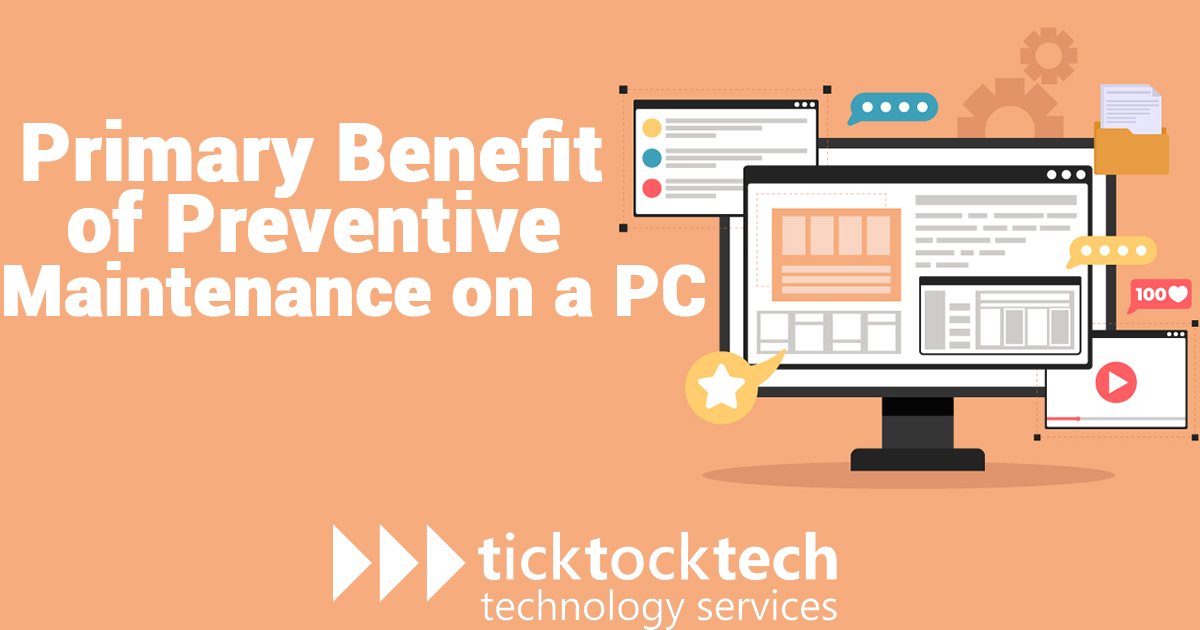A preventive maintenance plan on a PC refers to the regular inspection, cleaning, and servicing of devices to prevent potential problems and extend their lifespan. In the context of a PC, preventive maintenance involves regularly checking and maintaining various components are running smoothly and efficiently. These tasks include checking for and installing software updates and patches, cleaning the case and other hardware components, checking and replacing worn or damaged parts, and performing regular backups to protect against data loss.
Performing preventive maintenance on a PC can help improve its performance and speed, extend its lifespan, reduce the need for costly repairs, and enhance its security. It can also help prevent unexpected downtime and keep your work flowing smoothly.
Some specific tasks in a preventive maintenance plan on a PC include:
- Checking and installing software updates and patches: Keeping a PC up to date with the latest software updates and patches can help fix bugs and vulnerabilities and improve overall performance.
- Cleaning the case and hardware components: Over time, dust and other debris can accumulate inside a PC’s case and on its hardware components, which can interfere with its performance and cause overheating. Regularly cleaning these components can help keep them running smoothly and efficiently.
- Checking and replacing worn or damaged parts: Regularly inspecting a PC’s hardware components can help identify any parts that may be worn or damaged or need replacement. This can help prevent more severe problems down the road and extend the lifespan of the computer.
- Performing regular backups: Regularly backing up a PC’s data can help protect against data loss due to hardware failure, malware, or other issues. This can save you time and frustration in the event of a problem.
Related Article: Should I Repair My Computer or Buy a New One?
Benefits of a Preventive Maintenance Plan on a PC
- Prevents problems before they occur: Regular inspection, cleaning the computer, replacing worn or faulty parts, and preventive maintenance can help prevent future problems before they happen. This can reduce the need for costly repairs and downtime and help ensure that the computer runs smoothly.
- Improves performance and reliability: Preventive maintenance can help maintain the performance and reliability of a computer. Cleaning and replacing parts help ensure that the computer is operating at its best, and can help prevent problems that can slow down the system or cause it to crash.
- Extends the lifespan of the equipment: Regular preventive maintenance can help extend the lifespan of a computer by identifying and addressing potential problems before they become serious. This can save money by avoiding the need to replace the computer prematurely and can help ensure that it remains in good working order for longer.
- Helps maintain the health and functionality of the computer: Preventive maintenance is a valuable tool for maintaining the health and functionality of a computer. Regularly inspecting, cleaning, and replacing parts can help ensure that the computer is operating at its best and can help prevent problems that can alter its performance and reliability.
Limitations of a Preventive Maintenance Plan on a PC
- It is not always possible to predict a problem: One limitation of preventive maintenance is that it is not always possible to accurately predict when a problem will occur or what parts need replacement. This can make it difficult to plan and schedule preventive maintenance and could result in unexpected costs or downtime.
- It can be time-consuming and costly: Preventive maintenance can require significant time, energy, and money to replace parts and other materials. In some cases, it may be more cost-effective to wait for a problem to occur before fixing instead of engaging in regular preventive maintenance.
- It may not be effective at preventing all types of problems: Preventive maintenance may not be able to prevent software bugs or viruses, which can cause significant problems for a computer. In this case, other forms of maintenance and protection, such as regular software updates and virus scans, may be necessary.
Conclusion
Preventive maintenance is a proactive approach to maintaining the performance and reliability of a computing device. Regularly inspecting, cleaning, replacing parts, and preventive maintenance can help prevent problems before they occur, reducing the need for costly repairs and downtime. It can also extend the lifespan of the equipment and improve its overall performance. While it is not a perfect solution and has some limitations, preventive maintenance is a valuable tool for anyone looking to maintain the health and functionality of their computer.

